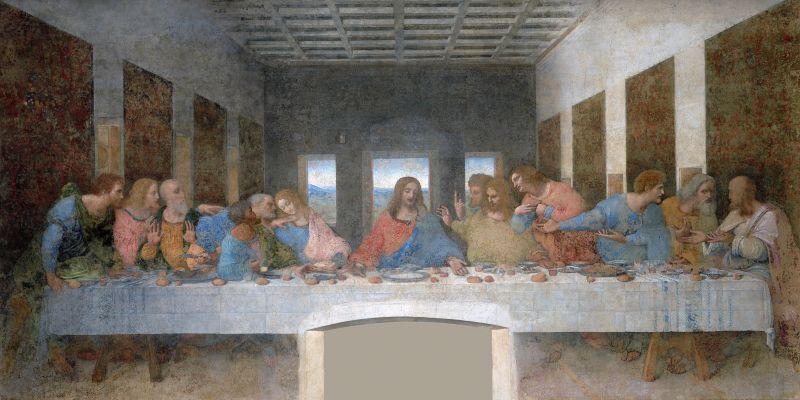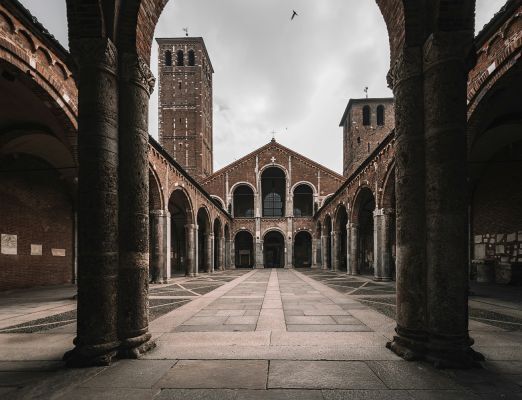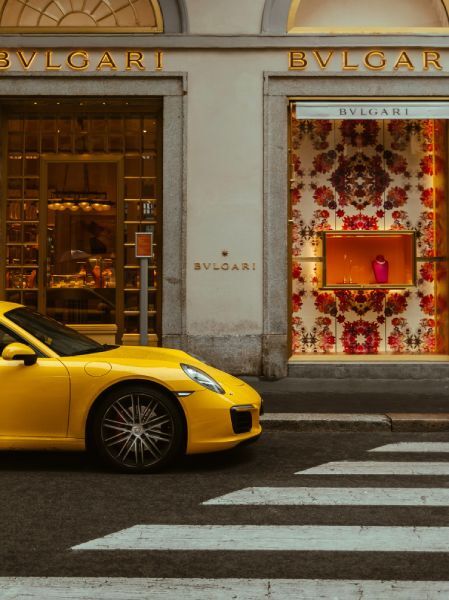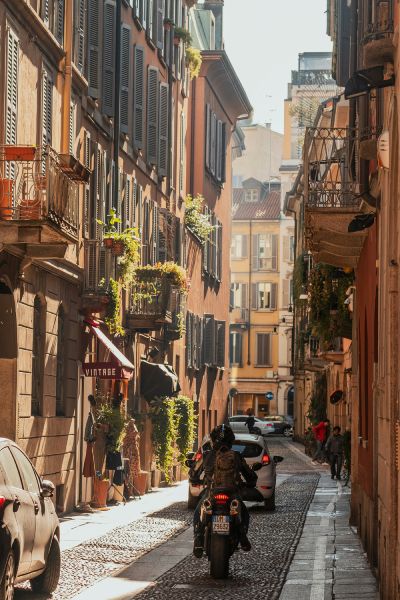Milan
Guide to Visiting Leonardo da Vinci’s The Last Supper in Milan
Right in the heart of Milan, tucked inside the renowned Convent of Santa Maria delle Grazie, you’ll find one of the most legendary works of Western art: Leonardo da Vinci’s “The Last Supper.” For generations, visitors from around the world have flocked to glimpse this unforgettable mural. More than a masterpiece, it’s a living witness to both the genius of Leonardo and the enduring power of a single moment frozen in time.
Why The Last Supper Is So Important
Commissioned in the late 1490s, “The Last Supper” shows a dramatic scene right after Jesus tells his apostles that one of them will betray him, based on the Gospel of John. This isn’t just a religious episode, but a moment filled with suspense, shock, and emotional energy. Leonardo’s brilliant use of perspective and expression allows you, the viewer, to feel right at the table, experiencing the apostles’ reactions to those fateful words. While the theme of the Eucharist is present, the scene is not the institution of the sacrament itself, but rather the revelation of the coming betrayal.
The mural isn’t just a Christian treasure: it’s a turning point in Renaissance art, and it has influenced how people everywhere view both Jesus’ last supper and the celebration of the Eucharist that followed.
Location and Opening Hours
Where to Find The Last Supper
The official address is Piazza Santa Maria delle Grazie, 2, 20123 Milano, Italy. The mural is located inside the refectory of the former Dominican convent, right next to the famous church bearing the same name.
Opening Hours
The museum is generally open from Tuesday to Sunday, 8:15 AM to 7:00 PM, with final entry at 6:45 PM. The museum is closed on Mondays, except during special openings. Before you go, it’s always a good idea to check the museum’s official news page for any updates or exceptions in their schedule.
Planning Your Visit: Why Booking Is Absolutely Essential
Unlike most museums, you can’t just walk up and buy a ticket at the entrance. Reservations are mandatory for all visitors, including children and infants. Tickets are released quarterly for the months ahead, and sell out quickly due to strict visitor limits designed to preserve the artwork.
You must arrive at least 30 minutes before your booked slot or risk losing your reservation. Each visitor group is allowed a maximum of 15 minutes in the refectory with the mural itself, this is for strict conservation reasons, so the masterpiece remains vibrant for future generations.
How to Book Tickets (Official Only!)
For all tickets and up-to-date availabilities, always use the official Museo del Cenacolo Vinciano website. Booking channels include online purchase, call center, and email (for groups).
- Tickets are released quarterly:
- September for visits in November through January
- December for February through April
- March for May through July
- June for August through October
- On-sale dates are announced on the museum’s news page.
- Check for sold-out slots and next availability via the official site.
Ticket Prices and Categories
- Adults (25 years and over): €15
- Youth (18–25 years): €2 (reduced)
- Children and teens (under 18): Free (reservation still necessary)
How to Get to The Last Supper Museum
Using Public Transportation
- Metro:
- Line M1 (red): stop at Cadorna FN or Conciliazione
- Line M2 (green): stop at Cadorna FN
- Tram:
Tram 16 stops right at S. Maria delle Grazie - Bus:
- Buses 50 and 169 stop close by at Via Boccaccio
- Taxi: Taxis can stop at Via Ruffini 1, directly opposite the ticket office.
The museum is located within Milan’s Area C (a controlled traffic and paid access zone), so public transport is usually the best choice for your visit.
Parking and Rideshare
If you plan to drive, blue-stripe paid parking is available along Via Fratelli Ruffini, including free spaces for people with disabilities. There are also several paid garages nearby; a notable option is Buonaparte Parking at Via Giacomo Puccini, 5.
Arriving for Your Visit
Don’t be late! You must be at the museum at least 30 minutes before your assigned time slot. Arriving late can mean you lose your entry, regardless of reservation or ticket. Consider building extra time into your travel schedule, especially if you’re unfamiliar with Milan’s transit routes or morning traffic.

Quick Reference: Your Visit Checklist
- Book tickets only through the official museum website
- Check ticket release schedules and mark your calendar for quarterly bookings
- Remember to reserve for every visitor in your party, including children or infants
- Plan for public transport and be aware of Milan’s Area C if driving
- Arrive at least 30 minutes early for your booking
- Pack light and make use of the museum’s lockers if needed
- Allow time for security, getting your bearings, and picking up educational materials
What to Expect During Your Visit
The Masterpiece Up Close
As you enter the refectory, prepare to be awestruck by both the mural’s scale and the emotional energy it captures. Each of the 35 visitors allowed into a slot is given a unique vantage point for the 15-minute viewing period. Security, conservation, and respect for this site all combine here: this is more than an art museum, it’s a sacred and historic place.
Why The Last Supper Is So Fragile
Unlike true frescoes, Leonardo experimented by painting directly onto dry plaster with a mix of materials. This allowed for breathtaking detail and luminous colors, but it sadly made the work vulnerable to moisture, pollution, and even the passage of time. Today, strict climate and lighting controls help preserve the mural, and visitor time is carefully timed to reduce stress on the masterpiece.
Accessibility and Visitor Resources
The Museo del Cenacolo Vinciano is committed to access and inclusion. Visitors with limited mobility will find accessible entrances and a tactile model of The Last Supper in the refectory. The museum also offers certified audio descriptions for visitors who are blind or have low vision, and educational resources including an official mobile app and downloadable guides to make sure everyone can appreciate Leonardo’s art.
Rules and Helpful Tips
- No bulky luggage, food, or drinks inside. Lockers by the ticket office allow you to store personal items during your visit.
- Your bag can remain in a locker for up to 60 minutes, but remember your group’s time with the artwork is only 15 minutes.
- Photography rules are strictly enforced, generally, flash is never allowed and there may be times when all photography is forbidden to protect the art.
- Official museum guides and educational materials are available on site and via the official app.
The Deeper Meaning: More Than Just Art
A visit to The Last Supper is not just about seeing a famous mural. It’s about standing in a place where history, faith, and genius merge. The expressions of the apostles, Leonardo’s skillful perspective, and the atmosphere of the ancient refectory combine for an experience that echoes through centuries. Whether you’re Christian, an art lover, or simply curious about humanity’s greatest stories, this work leaves an impact long after you leave.
Many guests leave the site with a new appreciation for the dedication required to preserve such treasures, and for the lasting role The Last Supper plays in both global art and spiritual culture.
Standing in front of The Last Supper is more than a highlight of an Italian holiday, it’s a journey into the past, one that brings art, history, and human emotion together in one unforgettable moment. With careful planning and the right information, you’ll give yourself the best opportunity to cherish one of the world’s most extraordinary works of art.
Ready to book your visit? Head to the official Museo del Cenacolo Vinciano website to start planning the highlight of your Milan adventure.




Discover Milan on Foot
Why our Milan guide works
Our mission is simple: help you explore Milan in a smart, walkable way. Every guide includes time‑boxed routes, an interactive map, and practical advice on tickets, transport, safety, and food, so you can discover Milan without overwhelm.
✔️ Clear, realistic Milan itineraries built by locals
✔️ Insider tips to beat crowds and avoid tourist traps
✔️ On‑route cafés, trattorie, gelato, and viewpoints
✔️ Offline‑friendly PDFs + map pins for your phone
FAQs
Will the itineraries work offline?
Yes. The PDFs are phone‑friendly and the map pins can be saved offline (instructions included).
Do you update opening hours and links?
We maintain 2025 updates and push changes to your download link whenever things change.
Are tickets included?
No, attraction tickets, transport, and meals are not included. We provide direct links and advice on what to book.
Refunds for digital downloads?
All sales are final. If you have trouble accessing files or the map, contact us and we’ll help.
Free Milan planning checklist (PDF)
Join 10k+ travelers planning to explore Milan smarter
We’ll email you the checklist to save on your phone.